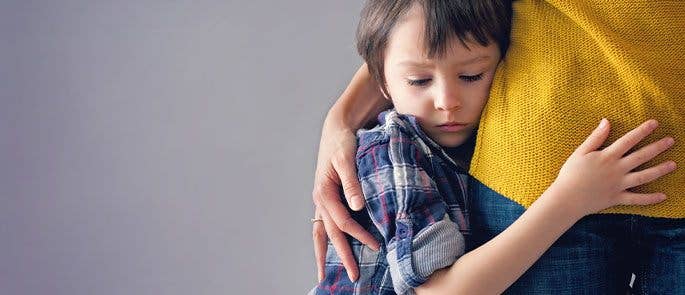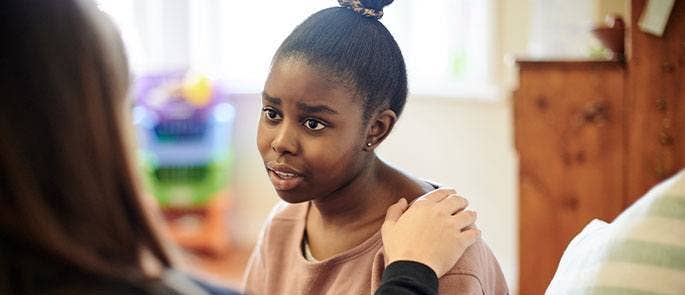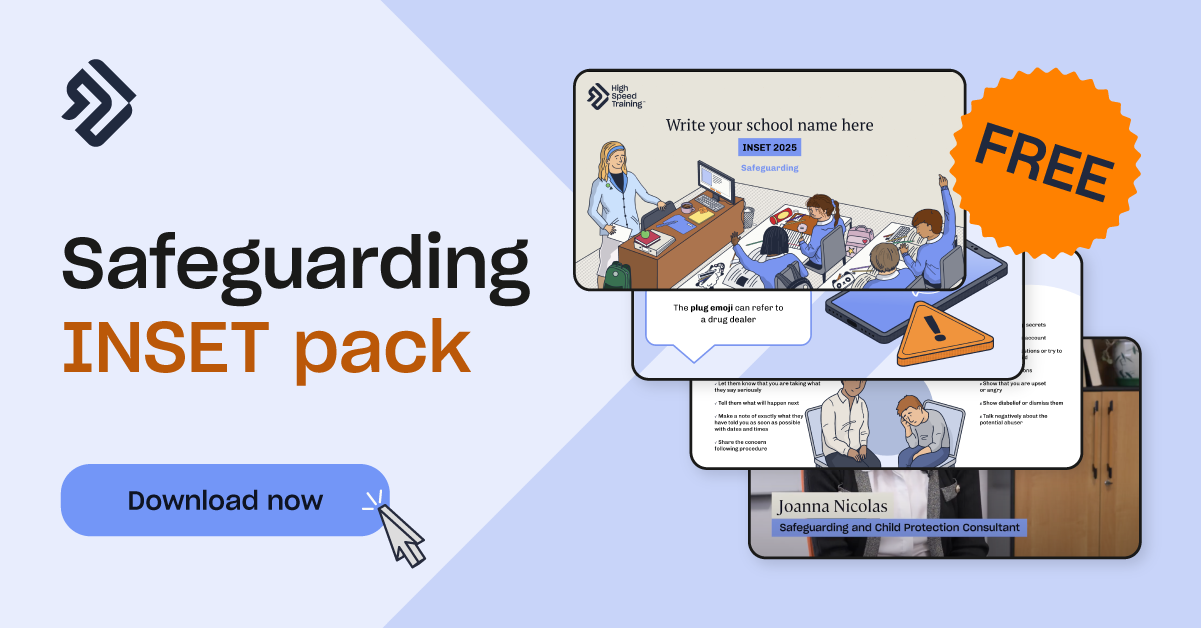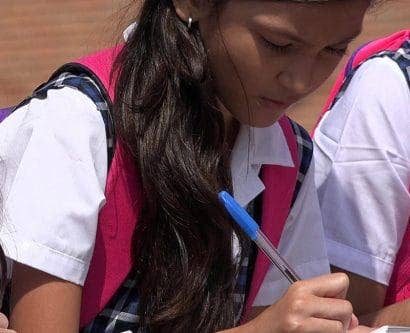The Impact of Domestic Abuse on Children
Every child has the right to a safe living environment irrespective of their gender, ability, race or religion. This right is enshrined in the 1989 United Nations Convention on the Rights of the Child (UNCRC), one of the most ratified human rights treaties in the world. When a child’s domestic environment is one in which bullying, threats or violence are the norm, this right is violated.
Domestic abuse creates an unsafe living environment for children and young people, regardless of whether they themselves are being physically harmed. Children and young people can be directly or indirectly affected by domestic abuse as a result of the harm that an adult in their family is causing. For those who have a responsibility for safeguarding children and young people it’s important that you are able to recognise the signs of domestic abuse so that you can offer the necessary support to keep a child safe. In this article we will outline what domestic abuse is, how it can impact children and how to support a child who is being exposed to domestic abuse.
What is Domestic Abuse?
Domestic abuse refers to the abuse that a person suffers in a domestic setting from a partner, spouse or family member. Domestic abuse is any type of controlling, coercive, threatening behaviour, violence or abuse. Anyone can be subjected to domestic abuse regardless of their age, gender or sexuality.
Domestic abuse can take many forms and can include, but is by no means limited to:
- Coercive control
- Physical abuse
- Emotional abuse
- Sexual abuse
- Neglet
- Financial abuse
- Stalking and harassment
- Technology-facilitated abuse
What is Domestic Abuse in Children?
Witnessing domestic abuse is child abuse. Regardless of whether a child is being harmed themselves, domestic abuse always has an impact on children and witnessing it can have a seriously harmful effect. The extent of this impact is recognised by the Domestic Abuse Act 2021 which identifies children who have been exposed to domestic abuse as victims themselves, rather than solely witnesses. Subsequently, children and young people who are living in an environment where domestic abuse is occurring are also being subjected to abuse.
Young people may also experience domestic abuse in their romantic relationships. They may be coerced into thinking this behaviour is normal, or if domestic abuse is occurring at home, they may think it is a natural and unavoidable part of being in a relationship. This may make them hesitant to share what is happening to them as they regularly see the same behaviour exhibited by a family member and have no frame of reference for a healthy relationship.

The Impact of Domestic Abuse on Children
Domestic abuse always has an impact on children. Irrespective of whether they are experiencing violence themselves or not, domestic abuse renders a home environment unsafe and this can have significantly negative consequences.
Children and young people who witness domestic abuse may experience:
- Hearing abuse
- Seeing a family member harmed
- Finding damaged items in their home from physical violence
- Being hurt from being caught up in a fight or trying to stop the abuse
- Not getting the care and support they need
- Being denied access to parts of their home
- Being forced out of their home
Repeated exposure to this kind of environment can cause a range of physical and psychological issues for children and young people. These can include:
- Bed wetting
- Increased sensitivity
- Issues with sleep
- Separation anxiety
- A disinterest in school
- Survivors’ guilt
- Poor behaviour at school
- Low self-esteem
- Difficulty making and maintaining friendships
- Engaging in risky/age inappropriate behaviour
- Fighting with peers
- Frequent truancy
- Anxiety
- Depression
- Repeating abusive behaviour
This list is not exhaustive and the physical and psychological impact of exposure to domestic abuse is extensive. It’s important to remember that the impact of witnessing domestic abuse can be far reaching and can follow a child well into adulthood. Recognising the signs of domestic abuse is therefore essential to ensuring a child has a safe and stable environment in which to grow and develop.
Signs of Domestic Abuse in Children
It is vital that you are able to recognise the signs that a child is being exposed to domestic abuse so that you can provide the necessary support. However, it can be difficult to spot signs of domestic abuse, especially if a child is not being physically harmed. Nevertheless, witnessing domestic abuse can cause emotional and psychological damage, the signs of which you must be able to recognise in order to act accordingly.

It’s important to remember that not every child or young person will show the same signs of domestic abuse nor do these signs immediately indicate that a child is being exposed to domestic abuse. However, by having an awareness of the signs of abuse in children you can build a more complete picture of what a child may be experiencing.
Signs that a child is being exposed to domestic abuse include:
- Social isolation
- Separation anxiety
- Anxiety, depression or suicidal ideation
- Ambivalence towards both the abuser and non-abusing parent
- Bullying peers
- Frequent frustration or aggression
- Being easily startled
- Nightmares and/or insomnia
- Difficulty forming positive relationships with peers
- Difficulty communicating feelings and needs
- Poor academic performance
- Frequent sickness and/or truancy
Want to Learn More?
Our wide range of Courses for Teaching and Education will provide you with the skills to be confident in your safeguarding responsibilities. Courses such as our Designated Safeguarding Lead Training and Child Mental Health Training will provide you with the knowledge and understanding to support all children in your care.
How to Protect a Child from Abuse
If you have a responsibility for safeguarding children then you must take every reasonable step to protect them. However, it is undeniably difficult to protect a child from domestic abuse when you are not in the domestic environment with them. Nevertheless, the steps below will help to protect a child from future or continued abuse and provide you with guidance on what you should do if you suspect a child is being exposed to domestic abuse or if they directly reveal this to you.
If a child reveals to you that they are being exposed to domestic abuse it’s vital that you provide them with a safe space in which to talk. Let them know that they’ve done the right thing by telling you and that the situation is in no way their fault. Listen to them and whilst it may be hard, try to remain calm no matter what they reveal. Don’t press them for answers that they may not be ready to share, but do try to ascertain if they are in immediate danger. If you suspect that a child is in immediate danger, you must call the police on 999 immediately. Once the child has finished telling you, you should explain what you are going to do next and reaffirm that they did the right thing by telling you.
Steps that you can take to protect a child from abuse include:
- Following your organisation’s child protection procedures – your organisation should legally have a safeguarding policy in place to keep children safe. If you suspect that a child is being exposed to domestic abuse but you don’t think they are in immediate danger, then you should follow the steps laid out in your internal policy or safeguarding flowchart. You should therefore ensure that all staff are aware of the policy and where to find it should they need to follow specific procedures.
- Creating a safe welcoming environment – children and young people are more likely to share concerns about their home life in a safe environment. Providing a safe space will embolden them to share what they are witnessing and reach out for help.
- Explaining healthy relationships – as mentioned, young people may experience domestic abuse in their personal relationships. If they are also exposed to domestic abuse at home they may not realise that this behaviour is in fact abuse as it has been normalised throughout their childhood. Teaching children and young people what a healthy relationship looks like will help them to recognise signs of abuse in their own relationships and seek help before the situation escalates.

- Documenting any concerns – you should record any concerns that you have that a child is being exposed to domestic abuse. This includes noting down any physical or behavioural signs that you have noticed. It’s important that your notes are as objective and informative as possible as they will help to build a bigger picture of what a child may be experiencing.
- Seeking advice from professionals and colleagues – share any concerns that you have with colleagues and anyone else who comes into contact with the child. They may be able to provide further insight or they may share similar concerns. You can also seek advice from professionals such as the NSPCC or Barnardos. The NSPCC is available 24/7 and can be contacted by calling 0808 800 5000. The NSPCC’s service Domestic Abuse, Recovering Together (DART) has been recognised by the Home Office and provides children and mothers who have experienced domestic abuse the space to talk to similar individuals and the support to rebuild their lives. The NSPCC supports organisations who want to adopt, implement and deliver DART themselves which may be beneficial depending on your safeguarding setting.
- Maintaining an ongoing relationship – as mentioned above, providing a safe environment can encourage children and young people to share what they are experiencing. If a child has disclosed that they are being exposed to domestic abuse then you must ensure you maintain open communication with that child. This enables you to monitor the situation and assess whether it is escalating or placing the child in immediate danger. It also ensures that the child feels like they have an adult they can trust and turn to.
Additional Support and Resources
There are a wide range of organisations who offer support to adults and children experiencing domestic abuse. These include:
For adults:
- National Domestic Violence Helpline – 0808 2000 247
- Men’s Advice Line – 0808 801 0327
- National LGBT+ Domestic Abuse Helpline – 0800 999 5428
For children:

No child is ‘just a witness’ of domestic abuse and the impact of being exposed to domestic abuse in any capacity can be far reaching. When a child is exposed to domestic abuse, whether directly or indirectly, their home environment is rendered unsafe and what should be a secure environment instead becomes one filled with fear. By identifying the signs that a child is being exposed to domestic abuse you can provide invaluable support that can help to keep them safe and ensure the necessary precautions are put in place before the situation escalates.
Further Resources:
- Free Safeguarding INSET Pack
- Signs of Abuse in Children
- What you Need to Know About Child-on-Child Abuse
- CPD Courses for Teaching and Education











